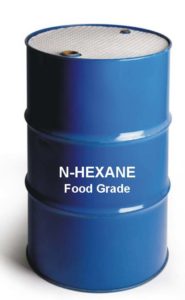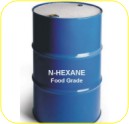Hexane extraction in soyfood processing
The selection of hexane as the solvent of choice for extraction of oils, other nonpolar constituents of plant foods, or removal of undesirable constituents from plant foods is one of the most common practices in the food industry. The solvent extraction process generally involves solubilization and partitioning in hexane, separation of the extract, and solvent volatilization and removal to recover the extracted constituents. Hexane extraction of  oilseeds was introduced in the 1930s and there is no evidence to substantiate any risk or danger to consumer health when foods containing trace residual concentrations of hexane are ingested. Hexane extraction of oil from soybeans is established as a safe and efficient process. No evidence exists to associate health risks or dangers from eating soyfoods exposed to hexane extraction processes
oilseeds was introduced in the 1930s and there is no evidence to substantiate any risk or danger to consumer health when foods containing trace residual concentrations of hexane are ingested. Hexane extraction of oil from soybeans is established as a safe and efficient process. No evidence exists to associate health risks or dangers from eating soyfoods exposed to hexane extraction processes
Vegetable Oil Processing. Processing of soybeans traditionally consists of five unit operations:
1) oilseed harvesting, elevator handling, and storage;
2) preparation (flaking) of soybeans for solvent extraction;
3) solvent extraction, oil/solvent separation and volatilization of solvent;
4) volatilization of residual solvent from flakes; and
5) oil refining. The extraction process separates the oil from the flakes by “washing” with hexane in a counter current extractor. Volatile hexane is removed from the separated oil and flakes by increasing the temperature through direct or indirect contact with steam. Residual hexane is very susceptible to vocalization during heating of the oil or flakes under high vacuums and temperatures in selected processes designed to produce soy foods or soy ingredients for human consumption with negligible hexane residual.

